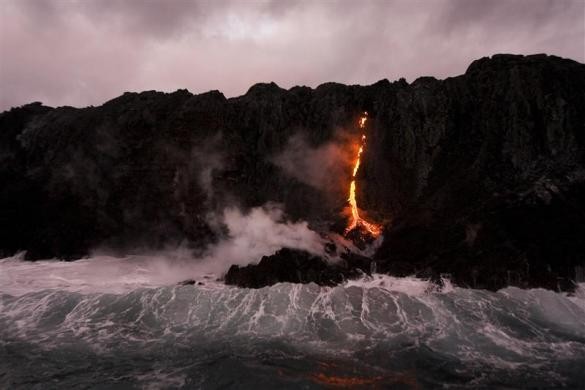
The mystery behind the origin of ash for making Maya pottery that has longed troubled the researchers have been solved. The researchers concluded that the ash came from huge volcanic eruptions. They utilized tiny and tough zircon crystals to find for the origin of the ash.
The result has also made researchers wonder if the Maya's ash were from one or many such volcanic blasts.
"While we're a little sad not to have solved the mystery, we're really confident we can say the most likely source quite conclusively isn't a match," Live Science quoted lead author Kevin Coffey, a geology student at the University of California, Los Angeles.
During the late classic period (A.D. 600 to 900), Maya cities' potters living on the Caribbean side of Central America used volcanic ashes along with limestone to create ceremonial and household pottery as using of ash made the ceramic easier to catch fire, Ford explained.
A huge crowd of people resides in cities such as Tikal and El Pilar, still no one knew where the ash originally came from.
The fact that the use of ash remained a mystery is because there are no volcanoes in the Central America. Also, the archaeologists never found any evidence of local mining of Maya ash.
"Every time I turn another leaf in this thing, it opens up a new problem," said study co-author Anabel Ford, director of the MesoAmerican Research Center at the University of California, Santa Barbara.
Though the local potters could have dragged the ash from many volcanoes from Guatemala and El Salvador, Mayan people carried loads on their backs, avoiding roads, Ford added.
The researchers believed that it was convenient to extract than dragging tons of ash every year. However, some other archaeologists consider that a long-distance trade group could have been possible.
When observed under a microscope, the pottery ash seemed to be fresh with pointed edges, which clearly suggested that the volcanic eruption could be a recent one.
Coffey explained that Ilopango volcano in El Salvador could be the most likely source of ash. The eruption devasted and buried in closely located Mayan cities during the fifth century like how cities were buried due to Mount Vesuvius and Pompeii that destroyed Central America.
Coffey compared zircons received from the Ilopango ash with those obtained from three El Pilar potsherds. Zircons can bear any amount of scorching heat. It can survive from a meteorite impact to even a volcanic eruption and a potter's oven too.Though the researchers investigated only a few of pottery fragments, they found that the chemical nature of the zircon crystals also varies among pots, suggesting that the ash were from at least two volcanoes.
The team of researchers expect to analyze more number of volcanoes from the Pacific coast and search for deeply located ash deposits on the Yucatan Peninsula. There are about 11 volcanoes along the western Central America and the detailed analysis of them could possible provide more information to the origin of the ash, explained Coffey
The findings were published in the journal Geology.

















